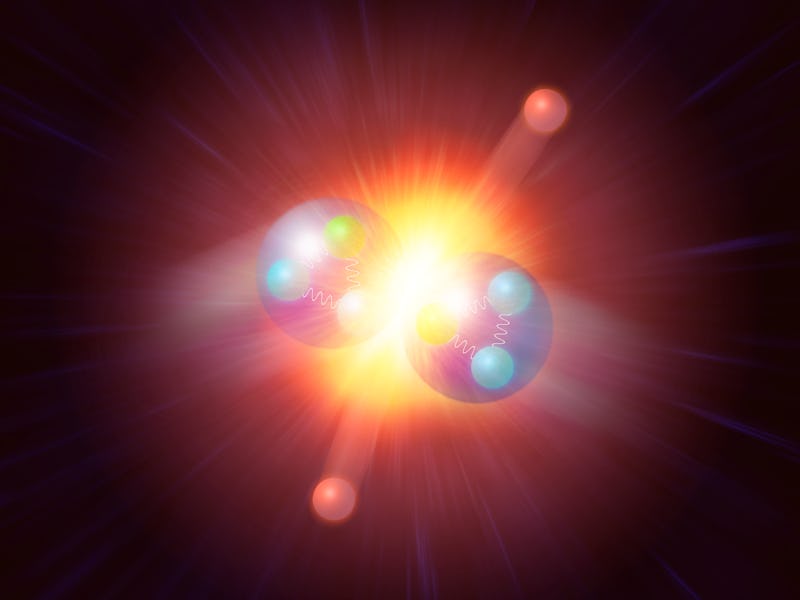Large Hadron Collider physicists find new particles in old data
These new kinds of quarks don’t last long.

On Tuesday, CERN’s Large Hadron Collider (LHC) switched on its data collectors, beginning a new run after several years of downtime for maintenance and upgrades.
But even as particle physicists prepare for an exciting future for their field, they’re continuing to crunch old data from particles that smashed years ago.
In fact, on that same day, scientists from one of LHC’s teams — called LHCb — announced that they’d found a trio of new, strange particles. These new discoveries delve ever deeper into the possibilities that arise from one particular category of subatomic particle: the quark.
Here’s the background — Think of the quark as a quantum building block. Quarks come in six kinds, or "flavors" — up, down, strange, charm, top, and bottom — each with a bespoke mass and electric charge. Most of the universe is made from up and down quarks; finding the other quarks, especially the weighty and elusive top quark, took decades.
Quarks can combine, glued together by even tinier particles called (aptly enough) gluons. Gluons’ adhesive ability is the effect of strong nuclear force, one of the universe’s four (known) fundamental forces.
One of the tunnels in the Large Hadron Collider.
The universe can fashion larger particles from quark bricks and gluon mortar: typically, two or three quarks. (Two up quarks and one down quark, for instance, build a proton. Two down quarks and one up quark form a neutron.)
The universe can craft even more particles by throwing in the quarks’ antimatter doppelgangers, antiquarks. Each of the six quarks has its own corresponding antiquark. Normally, matter and antimatter annihilate each other when they contact, but quarks and antiquarks can co-exist inside particles.
That's all well and good, but quark combinations don't stop at two or three. The universe can throw up tetraquarks—four tethered quarks—and even pentaquarks—five quarks. You won’t come across these in your everyday life; most are highly unstable, crumbling apart long before the blink of an eye.
But tetraquarks and pentaquarks do exist. In the past several decades, helped with particle accelerators like LHC, physicists have been able to observe quite a few of them in fleeting glances.
Meet the pentaquark. It won’t be sticking around long.
What’s new — In the latest data, particle physicists observed particles known as B mesons (comprised of a bottom antiquark and another quark) decay. In the flashes of detritus that the B mesons left behind, physicists pinpointed the traces of three, never-before-seen particles.
The first of the three was a pentaquark: a charm quark, a charm antiquark, and three other quarks, up, down, and strange. While most known pentaquarks come with charm quarks and charm antiquarks, this was the first known pentaquark with a strange quark slotted into it.
The other two were tetraquarks that formed as a couple: the first time physicists have been able to find two tetraquarks together.
What’s next — Examining quarks isn’t just about funding cool new particles. Shortly after the universe began, before what we know as matter came into being, the entire cosmos was filled with a superheated slurry of quarks and gluons, freely floating. Physicists call it quark-gluon plasma. LHCb’s goal is to try to recreate those conditions within the confines of CERN’s particle collider.